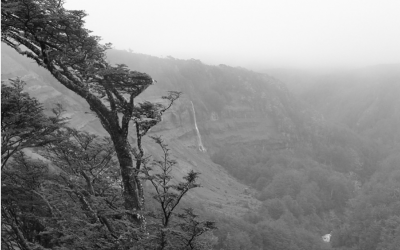Vieques: an Update
The turquoise blue water gently laps at the fine-white sand beach dotted by coconut palms. Verdant rock outcroppings frame the scene, so picture-perfect that it merits the cliché of tropical paradise. This is Caracas Beach. The Navy used to call it “Red Beach.”
The double name is a reminder that Vieques is not an ordinary tropical paradise; it’s also a fascinating David-and-Goliath story in which community activists successfully put a stop to Navy bombing and the military base on the island in 2003.
Now, five years later, Vieques residents face all the challenges of any tourist-dependent community: gentrification, sustainable environmental concerns; crime, unemployment and poverty. In addition, despite the tremendous mobilization of the community in protests that attracted Hollywood stars and U.S. politicians, many ordinary folk seem to have gone back to their daily lives, resulting in a weakening of civil society.
“People are tired,” observed Harvard Kennedy School of Government ’05 graduate Giovanna Negretti, a native of Vieques, who now runs the Massachusetts Latino organization Oiste. “Daily life is a struggle.”
When she was at KSG, she sought ways to turn her goal of economic development for her homeland into a practical initiative, formulating a strategy for addressing the island’s high unemployment and poverty rates through a cooperative venture model involving eco-tourism and cooperative housing. In addition to the usual challenges of an ordinary tourist destination, Vieques also faces the legacy of the past, including environmental cleanup and concerns about cancer and other health problems, as well as scarcity of land and housing. The transformation of the Navy lands into a nature refuge has limited availability of land for low-cost housing, industries and even fishing areas.
Ismael Guadalupe Ortiz, a community activist and retired drama teacher, declared. “We’re like the ham in a sandwich. The Navy gave the land to the U.S. Fish and Wildlife, and that means it’s into the beach at 6 a.m. and out at 6 p.m. We Vieque folk need our mobillity. Fishing is part of our economic culture. It’s not just recreation.”
Community activists say the cleanup is not going nearly fast enough. The island—much of which is still off-limits—is home to unexploded bombs, bomb fragments and toxic waste. Although a causal relationship has not been proved, residents cite a Department of Health study that indicates that Vieques cancer rates are 27% higher than on the mainland. “Every time a truck goes by announcing a funeral, you wonder if that person died of cancer,” commented Kathy Gannett Duff, a Vieques organizer originally from Dorchester, Mass. Like many residents, she is concerned about the time the Navy is taking and the fact that bombs are being detonated in the process of the cleanup. The Navy says it’s moving as fast as possible. “The Navy is removing the hazards of potentially dangerous munitions and conducting environmental remediation on Vieques as quickly as possible with the given funding, currently at about $20 million per year,” wrote Navy Public Affairs Officer Kelley J. Stirling in an e-mail. “The process of environmental investigation, data analysis, proposing and selecting remedies, in consultation with regulatory agencies and the public, does take a fairly long time, not just on Vieques. Interim actions can be, and have been, taken when needed to protect human health during the investigation and remediation process. We do continue to use open-air, controlled detonations as the safest way to dispose of large bombs and other dangerous munitions. These detonations occur about twice a month. The Navy performs air monitoring during the detonations and to date, nothing has been detected that would prove to be harmful or cause adverse impacts on human health and the environment.”
Walking on the Vieques beach, it’s easy to forget the island’s history. The long unpaved entrance to the beach used to be the entrance to Camp García. Even other unexpected dangers are more obvious. “Beware of attack rooster,” warns a sign on a home in the rapidly gentrifying neighborhood of Esmeraldas. But the problems—like on many a tropical isle—are there if you scratch the surface. “Getting the Navy out was a tremendous victory,” observed Cristina Corrada Emmanuel, a Vieques resident who spent part of her childhood in Boston’s Villa Victoria [see p. 53]. “But the challenges are now overwhelming. People are just getting by.”
Spring 2008, Volume VII, Number 3
Related Articles
Editor’s Letter: Puerto Rico
Long, long ago before I ever saw the skyscrapers of Caracas, long before I ever fished for cachama in Barinas with Pedro and Aída, long before I ever dreamed of ReVista, let alone an issue on Venezuela, I heard a song.
God Needs No Passport
For a practicing Buddhist, my first Mass attendance at St. Ambrose two years ago was a memorable event. I had spent the earlier part of the day visiting…
Blood of Brothers: Life and War in Nicaragua
Stephen Kinzer, New York Times Bureau Chief in Nicaragua for most of the war years, pauses in his compelling account of the war and its politics to explain the Socratic method needed to give…




